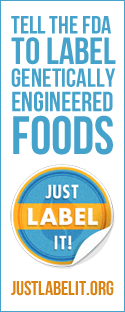|
NEW YORK -- Scientists say the jury’s still out on whether giving people calorie data spurs them to eat healthier.
Also read, Candy companies commit to cut calories in half of their products by 2022. New York City, the first city in the U.S. to put the law in full effect, says that requiring eateries to tell people that their $4 cheeseburger will also cost them about 540 calories is helping diners make informed choices in an era of rising obesity. New York’s lead was copied by other cities and counties and a half-dozen states and became part of then-president Barack Obama’s 2010 health care overhaul. The repeatedly delayed federal regulation, which extends to grocery and convenience store chain menus, is now set to take effect next year. But plenty of opponents to the idea remain, including some who question its effectiveness. Studies haven’t conclusively shown that restaurant-goers actually order lighter foods when the calorie tally is right there. It appears to influence some people, in some settings, and possibly restaurants’ recipes, researchers say. “What we haven’t seen so far is any sort of dramatic change in the number of calories purchased at the population level,” says Dr. Brian Elbel, a New York University health policy professor who co-authored a 2014 analysis of 31 studies on the subject, some of them his own. But “some people are definitely seeing and using this information.” The National Association of Convenience Stores cited some of that research when it sued to stop New York City from enforcing a retooled rule expanding the calorie labelling requirements to groceries and other small markets, saying the city was forcing businesses to spend thousands of dollars complying with a local rule when a national one is coming. A Manhattan federal judge approved a deal among lawyers on both sides that ensures the city will not enforce the expansion before May. The agreement also ensures that calorie counts won’t disappear from chains that have posted them for years. “This addresses the most basic of needs — providing us with nutrition information to make healthful decisions at the time of decision-making,” spokesperson Stephanie Buhle said this week. About 1 million New Yorkers see calorie data every day, according to Health Department research, and a 2011 Quinnipiac University poll found 79 per cent of city voters found the information useful. But if it’s useful, do people use it? At least three research analyses have said there’s no definitive proof it leads to lower-calorie orders for diners and eateries in general, though researchers involved note that they may not have captured small effects. While the overall evidence is mixed, “I think it’s still reasonable to say that among those who see and use the information, it is helpful to them — and why wouldn’t you want to give consumers information?” says University of Washington medical professor Jim Krieger, who runs Healthy Food America, a food policy advocacy group. SOURCE The Associated Press
0 Comments
Leave a Reply. |
Advertisement
News & Updates
Stay informed with the latest news around foodservice, agriculture and other related food news. Advertisement Opportunities
|


 RSS Feed
RSS Feed


